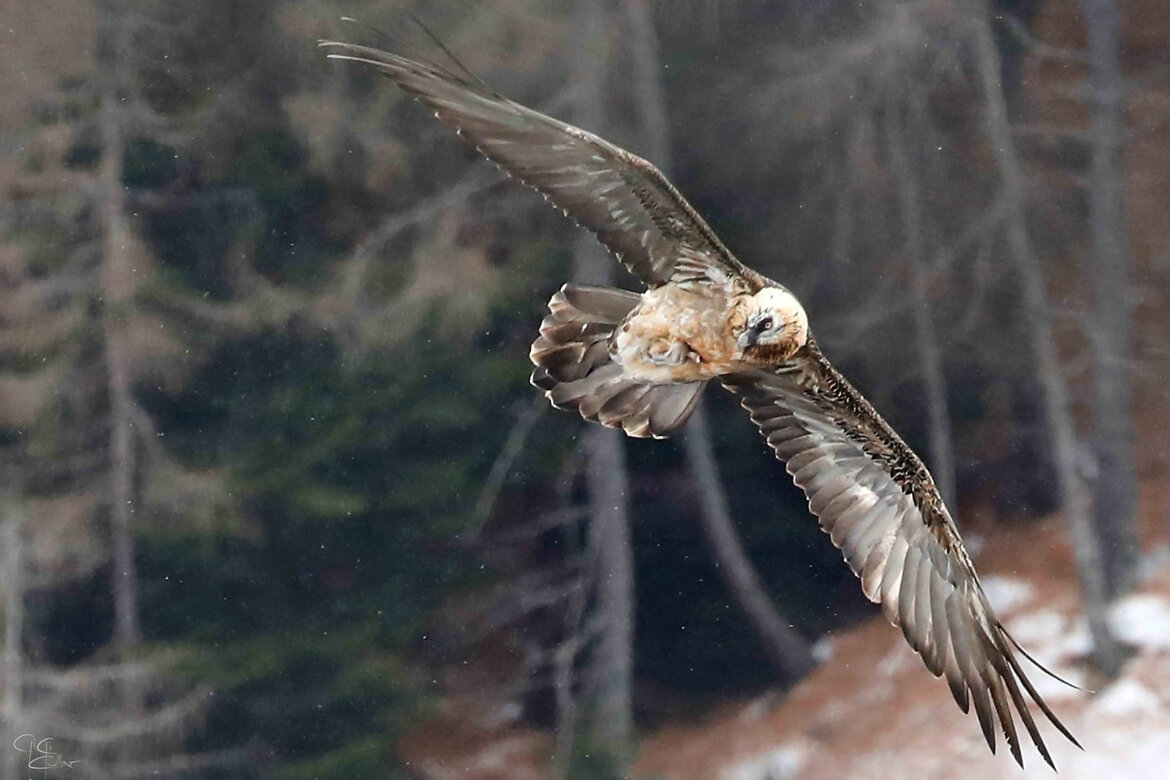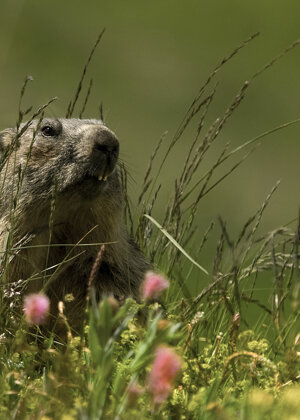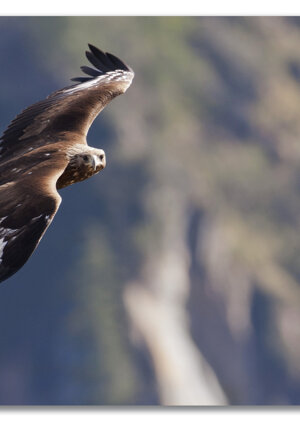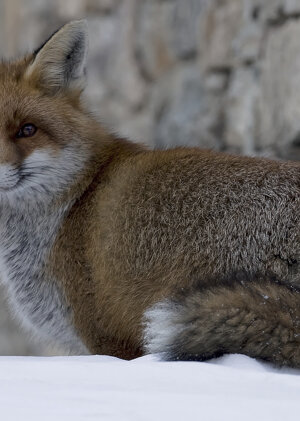Baltea Runner ASD ©

I am bec
HELLO SKYRUNNERS!
I promised you I would tell you about the wonderful and noble nature of Gran Paradiso, my “kingdom.” A nature that is certainly typical of the alpine “highlands” (the average altitude is 2400 meters!) but with elevations ranging from 900 m to the 4061 m of the Gran Paradiso summit. You can well understand that this great difference in altitude means that the Park hosts a great variety of habitats, including forests characterized by larches and stone pines, spruces and broad-leaved trees. More frequent, however, are the alpine meadows, environments characterized by the absence of tall vegetation that provide the right habitat for various animal species (including us). Then there are the rocky areas, glaciers, and high-altitude lakes where every now and then we take a walk together with our chamois friends.
This great variety of habitats corresponds to a great variety of flora and fauna. Alpine flowers are too many to name them all, but to mention a few: pulsatilla, martagon lily, artemisia, saxifrage, and edelweiss, but there are many, many more.
As for us little animals, well, I am the King, the Bec. For many years now, the Park Authority’s Surveillance Corps and Scientific Service have been monitoring and studying us (we don’t hide, we are the most important!). We males are distinguished by two large horns that grow with age and are not shed during the year. Our females, who spend the whole year on steep rocky walls (it’s hard to court them), have smaller horns, but with the same characteristics. The other important ungulate is the Alpine chamois, agile and fast, also with horns but smaller and hooked. You can meet them all year round at almost any altitude, while we spend long months at high elevations. When you are running the Royal, take a look around and you’ll see that one of us is watching you.
Among us ungulates there is also the roe deer and the deer, which instead shed their antlers during the year and inhabit more wooded areas.
Among mammals, the Alpine Marmot is ever-present, a medium-sized rodent that can be easily observed and lives in family groups, spending the winter and the nighttime or the hottest hours of summer in a system of burrows dug in its territory. You can easily recognize its presence by its alarm whistle, sounded in dangerous situations such as when you humans are too close or when predators like the Fox and the Eagle are around.
Yes, the Eagle, which here can only be Royal. She is present in all the valleys and has several nesting pairs that regularly produce chicks. The eagle feeds on marmots, young ungulates, and other small to medium-sized prey. After it became extinct, because of you, at the beginning of the 1900s, the Bearded Vulture has returned for some time now, a very large vulture with a wingspan of up to 3 meters. He, on the other hand, eats carcasses and bones (everyone has their tastes) and is easy to spot flying high in the sky.
For some years now, the Wolf has also returned, living in small packs and feeding mainly on wild ungulates.
There are also numerous bird species that inhabit the Park depending on the altitude and environment: in the woods, tits, woodpeckers, and nutcrackers; in the meadows and scree, the wheatear, the water pipit, and the ring ouzel, etc. etc..
Up to the highest altitudes there are also reptiles, such as the viper, which if not disturbed does not pose a danger. Then there are amphibians, fish, invertebrates (butterflies, grasshoppers, bees, bumblebees, spiders…) and these last ones are really numerous and constitute an immense reservoir for the Park’s biodiversity: in fact, it is these classes of animals that are the subject of one of the Park’s longest-running research projects, in which researchers measure the density of this fauna along the altitudinal gradient, to determine if something, and what, is changing as a result of ongoing climate change.
So, skyrunner, you can well understand that in the Park, in my kingdom, I am not the only one. The floristic and faunal biodiversity of this area is of great importance and so our friends at the Park work hard to ensure the conservation of this extraordinary natural environment.
So please, when you are walking or running along the Royal trails, always “on tiptoe,” look around, perk up your ears, and take a deep breath: at that point, the wonder of Gran Paradiso will be yours and I am sure you will come back to visit me many times.
Bye!




Baltea Runner ASD ©
